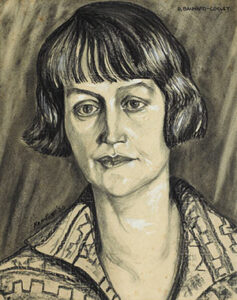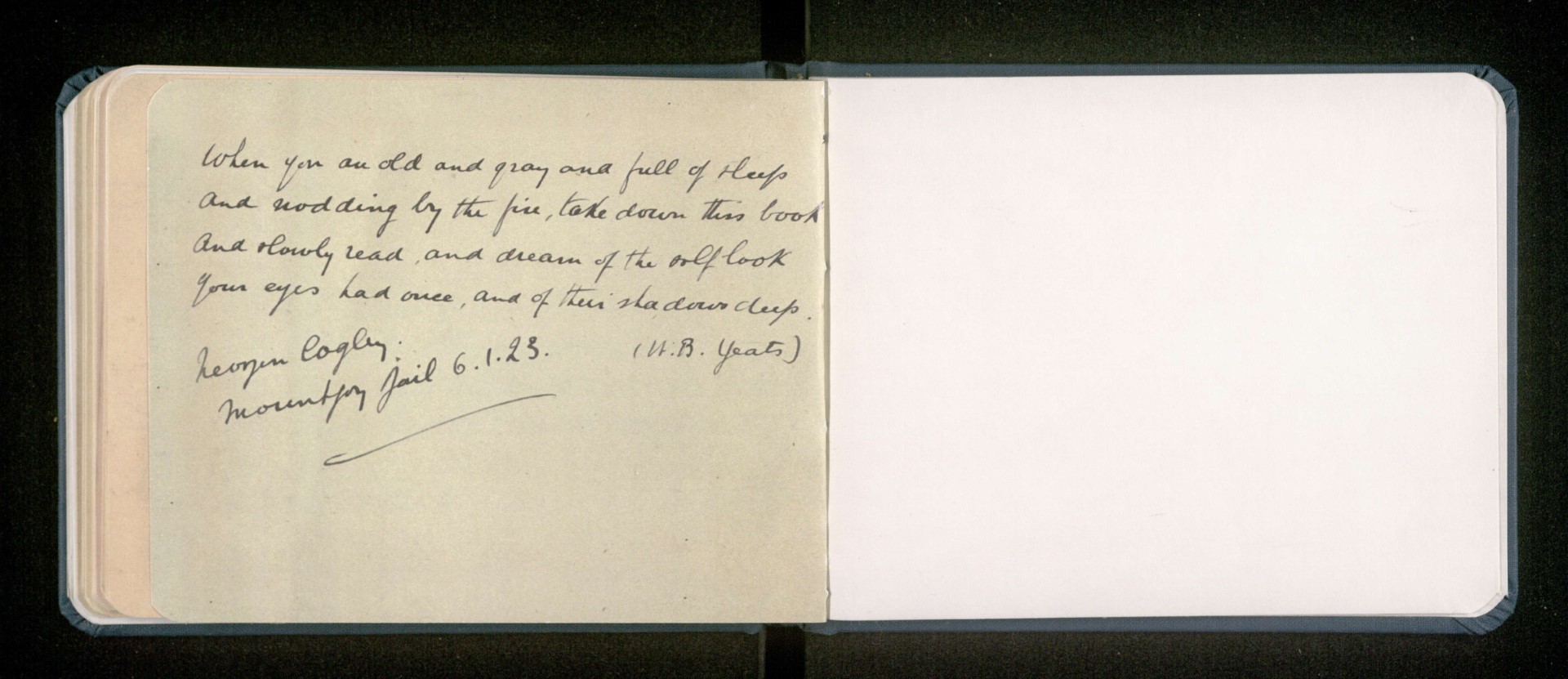

Remembering Daisy Bannard Cogley on International Women’s Day
Daisy “Toto” Bannard Cogley
(5 May 1884 – 8 September 1965)
Daisy Bannard Cogley was a pivotal figure in the cultural landscape of Dublin and played a significant part in the establishment and early management of the Gate Theatre. An accomplished theatre director, costume designer, actress, and stage manager, Bannard Cogley was born in 1884. From 1913 Bannard Cogley was active in the women’s suffrage, republican, and labour movements, and was known for her association with Constance Markievicz and contributions to her 1918 presidential campaign. Bannard Cogley continued her political journey throughout the Civil War, and as an anti-treaty supporter, was interned for 10 months from December 1922. Upon release, she traveled to Geneva to appeal to the International Red Cross for republican prisoners.
Outside of her activism, Bannard Cogley was one of the four founders of the Gate Theatre Studio, which would later become the Gate Theatre. Alongside Hilton Edwards, Michéal Mac Liammóir, and Gearóid Ó Lochlainn, she played a pivotal role in shaping the theatre’s early years. In fact, the foundations of the Gate Theatre can be traced back to Bannard Cogley’s discussions with Ó Lochlainn, and their hunt to find a permanent theatre space in Dublin. These conversations led to a fateful meeting with Edwards and Mac Liammóir, ultimately resulting in the launch of the Gate Theatre Studio at the Peacock stage of the Abbey Theatre in October 1928.
Bannard Cogley’s influence extended beyond the inception of the theatre. Her cabaret efforts were responsible for the initial membership base of the Gate Theatre, 400 people strong. Moreover, she actively participated in the theatre’s productions, taking the stage for the Gate’s inaugural show, Peer Gynt by Henrik Ibsen. Bannard Cogley was known for acting in several of the theatre’s early shows, as well as offering her Harcourt Street club as a space for rehearsals, and actively contributing to costume-creation. Without Bannard Cogley’s contributions off-stage, and on, the early impact of the Gate Theatre Studio could have been considerably lessened.
Outside of the Gate, Bannard Cogley ran her own Studio Theatre Club on Upper Mount Street, showcasing productions like Teresa Deevy’s Wife to James Whelan in 1956. This theatre, also known as Madame Cogley’s Studio Theatre, occasionally collaborated with the Gate Theatre, further illustrating Bannard Cogley’s influence in Dublin’s theatrical circles.
While she became less active in the Gate’s day-to-day operations in later years, Bannard Cogley retained a significant role as one of the theatre’s directors-for-life. Daisy Bannard Cogley’s legacy continues in her imprint on the Gate Theatre, Dublin’s theatrical heritage, and in generations of women that followed her footsteps in the theatre industry.

Above: Portrait of Madame Desirée (also Daisy) Bannard-Cogley by Harry Kernoff. Photo Credit: History Ireland
Resource Credit:






